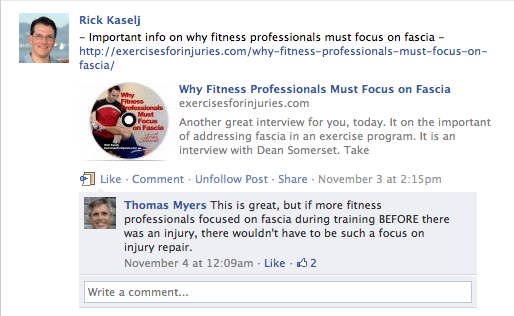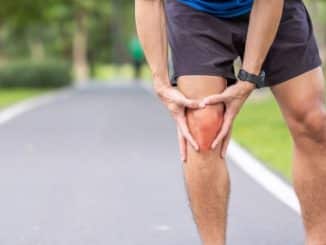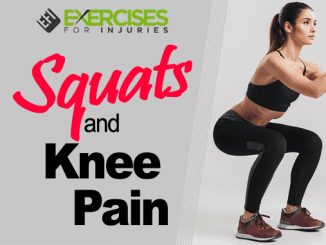
Corrective exercise is a specialized type of exercise that is used to treat an existing problem. It can also be used to prevent further issues from occurring as a result of an existing injury or weakness. Corrective exercise has many different names depending on what the focus is; it may be called prehab, dynamic stretching, mobility work, or even “that weird stuff the trainer made us do”. But no matter what you call it, corrective exercise is effective at helping your body recover from an injury and preventing future injuries as well. So whether you’re currently recovering from an injury or want to prevent one in the future, try these 10 steps for overcoming your injury with corrective exercise.
Injuries are no fun.
- They are a pain, literally.
- Injuries can stop you from doing something you love.
- It can cause nagging aches and pains.
- Injuries can affect you mentally. It can ruin your day.
- It is something that most people try to avoid.
- On the other hand, they can also be a blessing in disguise. This is something that I have realized firsthand.
The Rush of Training
It is the thrill and rush of stepping onto the platform to compete that I love most about powerlifting. I enjoy pushing my body past its limitations and growing physically and mentally stronger as I pass barriers with my training. It’s been over twelve years since I’ve trained without a break (and I still have a long way to go). I love being in good shape and moving weights that most people can only dream of lifting.
When I’m not training, I’m helping others train, reading about training, or dreaming about training. The deadlift happens to be my ace and pretty much my favorite thing to do. In my opinion, there is no better feeling than locking out a heavy deadlift as you feel every muscle in your body tighten up to make it happen.
The hip drive, grip strain, the glutes coming through, the back locking out, the traps stabilizing, the intrinsic foot muscles | 404 gripping the floor, the blood rushing through the veins, and the rush that flows through the body and mind; just a fantastic feeling that only certain people will understand. Not being able to do this for some time was devastating.
A great little video from Nick on Gluteus Medius Exercises:
Training Stupidity
In November 2008, I trained excessively frequently, pulling my first 600lb deadlift at 178-180 pounds. On the day of the competition, I was on track to pull 610 with band tension in addition to triple 540 and improve my assistance programs. I missed 570 at my last meeting when I almost locked out 585. The training was partly to blame, but I competed too frequently and too intensely. However, I knew that the only way I couldn’t lock out 585 was because the weight was moving so smoothly; I was certain I would. As I got closer to the lockout, I couldn’t finish it. I was so upset.
The Injury was in the Details
So at this time, I was in my last semester in the exercise science and strength & conditioning program at UW-La Crosse. Luckily, I was surrounded by knowledgeable people who knew their stuff. I spoke with one of my mentors and an excellent strength coach who knows two things about the iron game. I showed him a video of my missed deadlift. He immediately pointed something out that I hadn’t noticed or even thought of. My left leg began to shake as I approached the lockout. He looked at another video of a 560 pull I had made easily a few months earlier. I had some rotation occurring through my hips and trunk as I pulled the deadlift. It was subtle, but you could sure see it.
So what the heck was going on?
He evaluated me and found out that:
- my left glute was not firing as well as my right with hip extension
- right shoulder had some issues as well
- subscapularis was very fibrotic and was stopping my scapula from moving as efficiently as it could
If you have ever read any of Thomas Myers’ stuff on fascia and exercise, this should make you think of the spiral line: opposite hip and shoulder.
I’m assuming that many who read this page know about the book, Anatomy Trains, so I won’t get into tons of detail, but the spiral line is a line of fascia that wraps around the body and at a particular portion of its path, connects opposite hip and shoulder; meaning that an issue with one can affect the other with various movements.
This had implications for the rotation that was occurring with my movement. So he did some ART on my hip and shoulder (left TFL and right subscap, among other things) and gave me a few corrective exercises to fix this imbalance. This was probably my first real personal experience/encounter with the world of muscle imbalances and corrective exercise.
Every type of strength and conditioning had been adequately researched prior to this match, but this other field had been neglected. I wanted to correct my imbalance and improve my condition. I decided to take time off from competing to address these issues. After January, I would begin my full-time internship to finish my degree, which would be one of the most memorable experiences of my life.
Muscle Imbalances that Affected My Lifting
Enter Indianapolis Fitness and Sports Training with a couple of guys named Mike Robertson and Bill Hartman | 404. I learned a tremendous amount about training during my amazing time there and was immersed in the world of analyzing and addressing postural faults and muscular imbalances. I had no choice but to get better.
They discovered some of the same that my mentor at La Crosse had, plus more:
- weak left glute medius
- left glute max had gotten a little better but still wasn’t great
- external obliques weren’t where they needed to be, which meant that I didn’t have optimal control over my pelvis and trunk and was leaving pounds on my lifts
- lower traps were weak, especially the left side, which meant that my scapulae were not as stable as they could have been (implications for all of the big lifts)
- I had a slight shift and rotation with squats and pulls, which was part of the issues listed above.
Those were some of the main problems for me. So I hammered lots of special exercises to help balance things out and get my lifts up. I did, however, make one mistake. And I still trained too intensely, too often. I picked a meet that I wanted to do that May and prepared for it.
Bill Hartman’s Presentation in Muscle Imbalances Revealed – Lower Body Edition:
Now, these issues that I had were probably going on for a long time. In my early days of training back in high school, I had no real idea what I was doing (though I sure thought I did) as I pretty much just taught myself and learned from random gym rats and magazines back then.
While most people would not have noticed the rotations and shifts I made with my squat and pull, I have no idea how long it went on for. I got along well and developed into a respectable strength and build, but fixing some of these things earlier may have saved me a lot of trouble and possibly helped me lift heavier weights. Missing a maximal deadlift because one glute wasn’t firing in comparison to two glutes firing is extremely significant. I was training hard and making lifts, and so forth. until…
That is the end of part 1. I got part 2 coming up very soon. Big thanks to Nick. We all have an in-jury story.
About the Author
Nick Rosencutter, CSCS, NSCA-CPT, LMT – Nick is a Certified Strength and Conditioning Specialist and Certified Personal Trainer through the National Strength and Conditioning Association and is also a Nationally Certified and Licensed Massage Therapist. He received his Bachelor’s degree in Exercise and Sports Science with a Fitness emphasis and Strength and Conditioning Concentration from the University of Wisconsin La Crosse. He received his diploma in Massage Therapy from Lakeside School of Massage Therapy in Milwaukee. Nick has worked with all varieties of clients ranging from fat loss to various levels of athletes and is also a competitive powerlifter. He currently trains clients at Southridge Athletic Club in Milwaukee and offers corrective exercise and movement training at Miller Sports and Wellness Chiropractic in West Allis. You can learn more at his website www.rosencutterultrafitness.com
Rick Kaselj, MS





